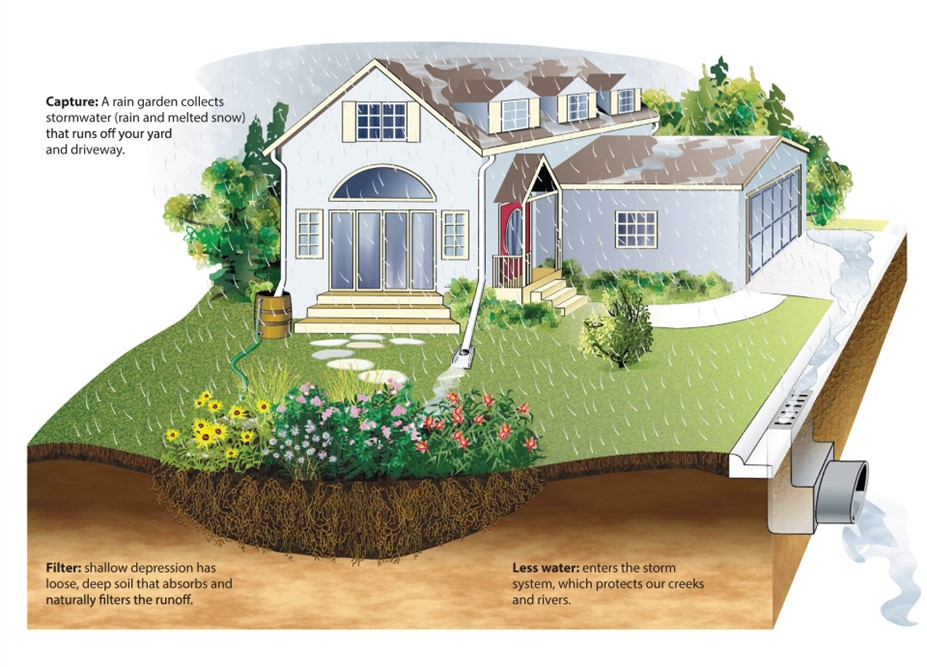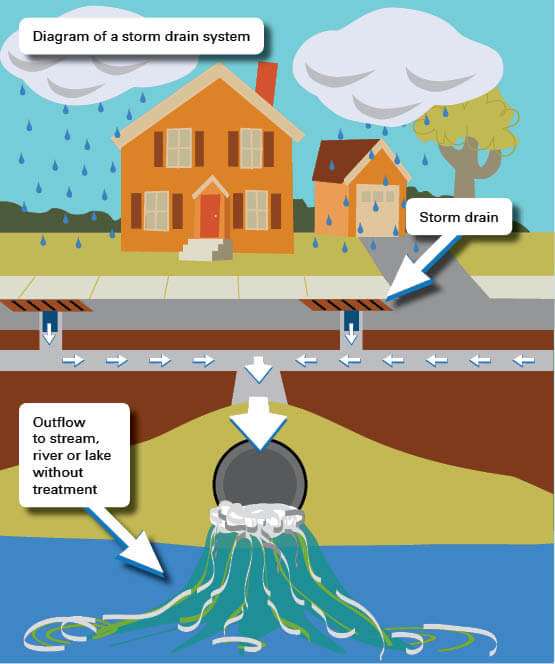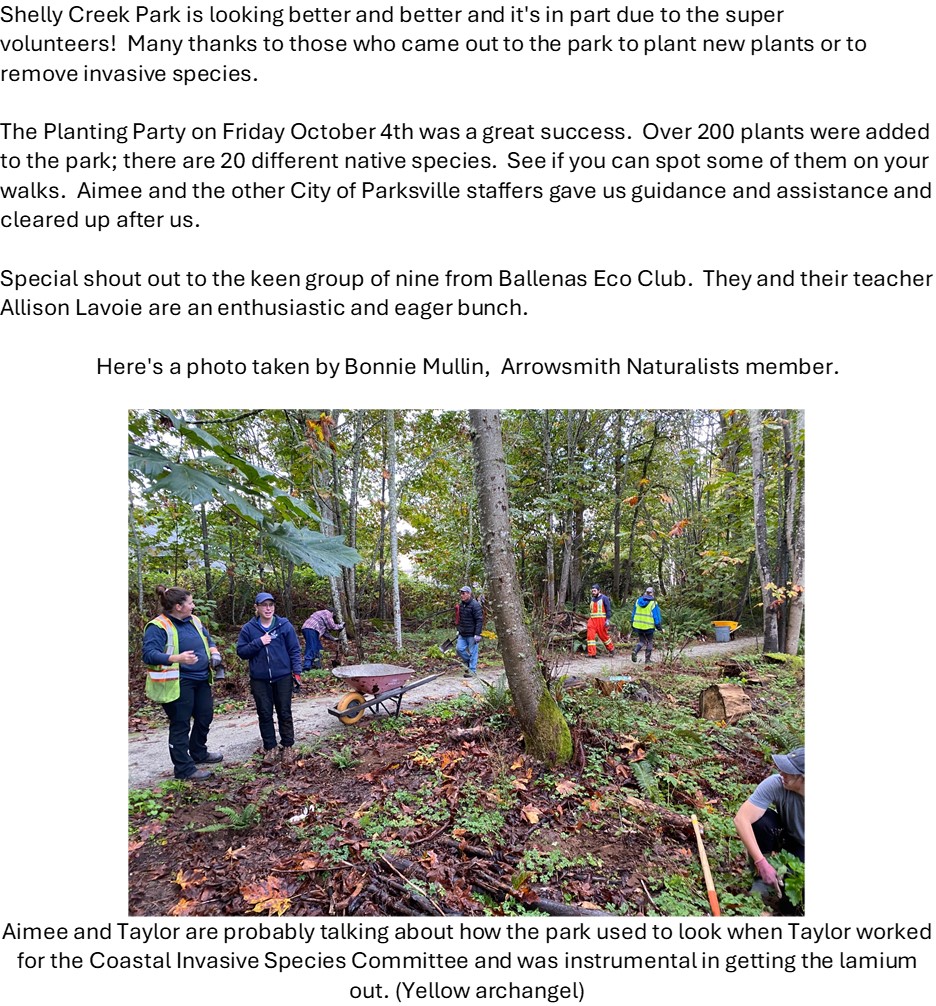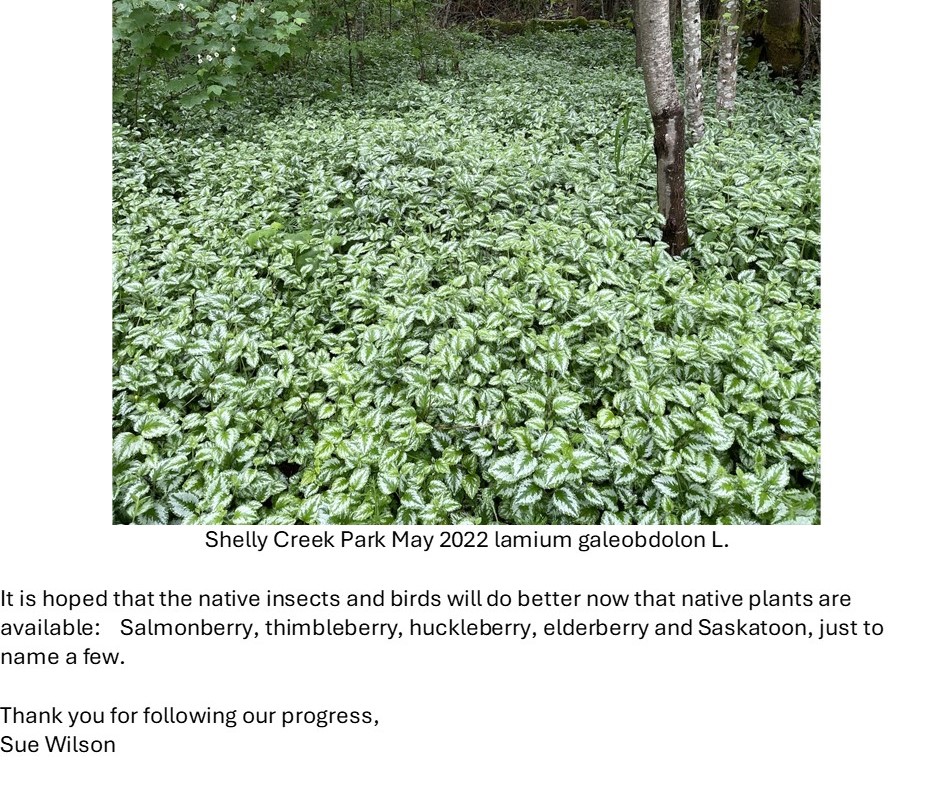MVIHES Volunteers Rock!.....and dig and plant, etc.
Water quality monitoring, rain garden education, planting trees, and a marine debris survey are just a few of the activities our volunteers have been up to this fall. Read on for the full story.
 From October 8 to November 5, volunteers were monitoring water quality as part of the Community Watershed Monitoring Network run by the Drinking Water and Watershed Protection department at the Regional District of Nanaimo (RDN). Each year stewardship groups from all over the region participate in this monitoring program which collects water quality data every Tuesday for five weeks in late summer (low flow) and five weeks during the fall flush. One MVIHES team monitors nine sites in the Kw'a'luxw (Englishman River) watershed while a second team monitors five sites on creeks in Nanoose and Lantzville. The RDN uses the data to help make decisions in land use planning. Volunteers include Martin Yeo, Brenda Riley, Kathy Miller, Liz Campbell, Jeff Allen, Larysa Bilou, Katya Kondratyuk, Adam Walker, Barb Riordan, Chris Smith .and Sue Wilson as our backup.
From October 8 to November 5, volunteers were monitoring water quality as part of the Community Watershed Monitoring Network run by the Drinking Water and Watershed Protection department at the Regional District of Nanaimo (RDN). Each year stewardship groups from all over the region participate in this monitoring program which collects water quality data every Tuesday for five weeks in late summer (low flow) and five weeks during the fall flush. One MVIHES team monitors nine sites in the Kw'a'luxw (Englishman River) watershed while a second team monitors five sites on creeks in Nanoose and Lantzville. The RDN uses the data to help make decisions in land use planning. Volunteers include Martin Yeo, Brenda Riley, Kathy Miller, Liz Campbell, Jeff Allen, Larysa Bilou, Katya Kondratyuk, Adam Walker, Barb Riordan, Chris Smith .and Sue Wilson as our backup.

Between October 13 and 19, a team of volunteers collected water samples before, during, and after high rain events for the presence of 6PPD-quinone, a byproduct of tire wear that is toxic to Coho Salmon at very low concentrations. 6PPD-quinone accumulates on roads, bridges, and parking lots from where it is washed into creeks and rivers during heavy rain. The BC Conservation Foundation is running this program across Vancouver Island to identify waterways containing the toxin.
Finding none in the Kw'a'luxw River, Shelly Creek and Craig Creek, the team moved on to sampling the water coming out of the Mills Street and Carey Creek stormwater outfalls. Lethal concentrations were measured at both outfalls during the rain events which is very concerning. The Mills Street outfall flows into the Kw'a'luxw River Estuary which provides rearing habitat for salmon fry and smolts. Vegetation filters out 6PPD-quinone which emphasizes the importance of strategically placed rain gardens for treating rainwater running off roads and parking lots. The team includes Barbara Wildman-Spencer, Dick Dobler, Kathy Miller and Denis Cote.
On October 27, our Raingarden Team Leader, Bob Williams, and Terry Bajenko (photo below) were at the Fall into Gardening Conference with their awesome display for educating and encouraging the public to build raingardens. Terry has her own rain garden and shared her valuable experience with the attendees. The theme of the conference was preparing gardens for climate change. Rain gardens are an important component to mitigating the impacts of climate change on our salmon streams. Watch our short video on the Parksville Firehall Rain Garden to learn more.

On November 13, volunteers worked with Department of Fisheries and Oceans (DFO) in planting an old gravel pit beside the Side Channel in the Englishman River Regional Park. The gravel pit was a low spot where salmon spawners became stranded during high flows. DFO filled in the pit, and volunteers along with three DFO folks planted trees and shrubs. It was tough digging through the cobble encountered under about 8 inches of ameliorated soil (sand mixed with humus and straw), but they finished in two and a half hours. Volunteers included Yana Maltais, Mark Hogg, Nancy Pezel, Chris Smith, Tom Whitfield, Leonard Neufeld, and Tim Popoff.

Throughout November, the Snaw-naw-as First Nation have been planting 2000 trees and shrubs along the section of Shelly Creek we restored in 2021 and 2022. Volunteers Heather and David Ranson, Shelley Perry, Nancy Pezel and Barb Riordan helped out. The challenge with this site is the heavy clay soil that clings to your boots and shovel, adding about 20 lbs of dead-weight (“Groan, I’m to old for this….”). But this soil provides some mighty fine growing conditions, and the trees and shrubs planted 2 years ago by the Snaw-naw-as and MVIHES are doing great. This section of creek will have a very robust riparian zone.


Check out the growth leader on this Sitka spruce (Steven Moore, consultant) Ron Fraser with salmonberry shrubs


Derrick Bob Logan Bob
Spawning Coho Salmon have been observed during the planting, along with a big Cutthroat Trout and a Chum Salmon. We’ve re-connected our antenna array in Shelly Creek which tracks fish with PIT tags. We partner with the BC Conservation Foundation on this project. So far, four Cutthroat Trout that were tagged in the watershed this spring have been detected in Shelly Creek: two juveniles originating from Shelly Creek, one juvenile that ventured all the way from Centre Creek, and the fourth trout was 22.5 cm (almost 9 inches) long when it was tagged in the Side Channel in the Englishman River Regional Park. Huh, they do like to wander. None of the Coho spawning in the creek so far had tags but it's early days. Volunteers are Denis Cote, Rick Walz, Shelley Goertzen, Chris Smith, Maggie Estok, Dick Dobler and Barb Riordan. Stay tuned for updates.

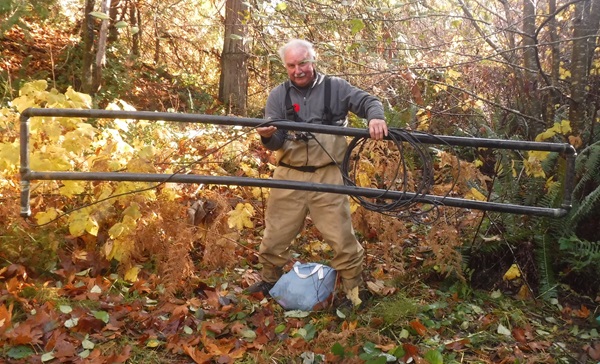
Antenna array inside PVC pipe Downloading data logger
 On November 14, a Marine Debris Survey, where we look for macro and microplastics, was conducted on Rathtrevor Beach by our team: Martin Yeo, Yana Maltais, Kathy Miller, Gene Gapsis, Bob Williams, and Barb Riordan. The Mount Arrowsmith Biosphere Region Research Institute is running this program with several stewardship groups in the region and provides training, equipment and entering of our data into a global database. This is the fourth survey we've done this year at Ratthtrevor and the first time we've found a microplastic. One measely teeny piece which is good news. Very few macroplastics were found on the beach. Debris also includes paper products, metals and styrofoam.
On November 14, a Marine Debris Survey, where we look for macro and microplastics, was conducted on Rathtrevor Beach by our team: Martin Yeo, Yana Maltais, Kathy Miller, Gene Gapsis, Bob Williams, and Barb Riordan. The Mount Arrowsmith Biosphere Region Research Institute is running this program with several stewardship groups in the region and provides training, equipment and entering of our data into a global database. This is the fourth survey we've done this year at Ratthtrevor and the first time we've found a microplastic. One measely teeny piece which is good news. Very few macroplastics were found on the beach. Debris also includes paper products, metals and styrofoam.


Microplastic in red circle Some of the marine debris
Many thanks to our partners.

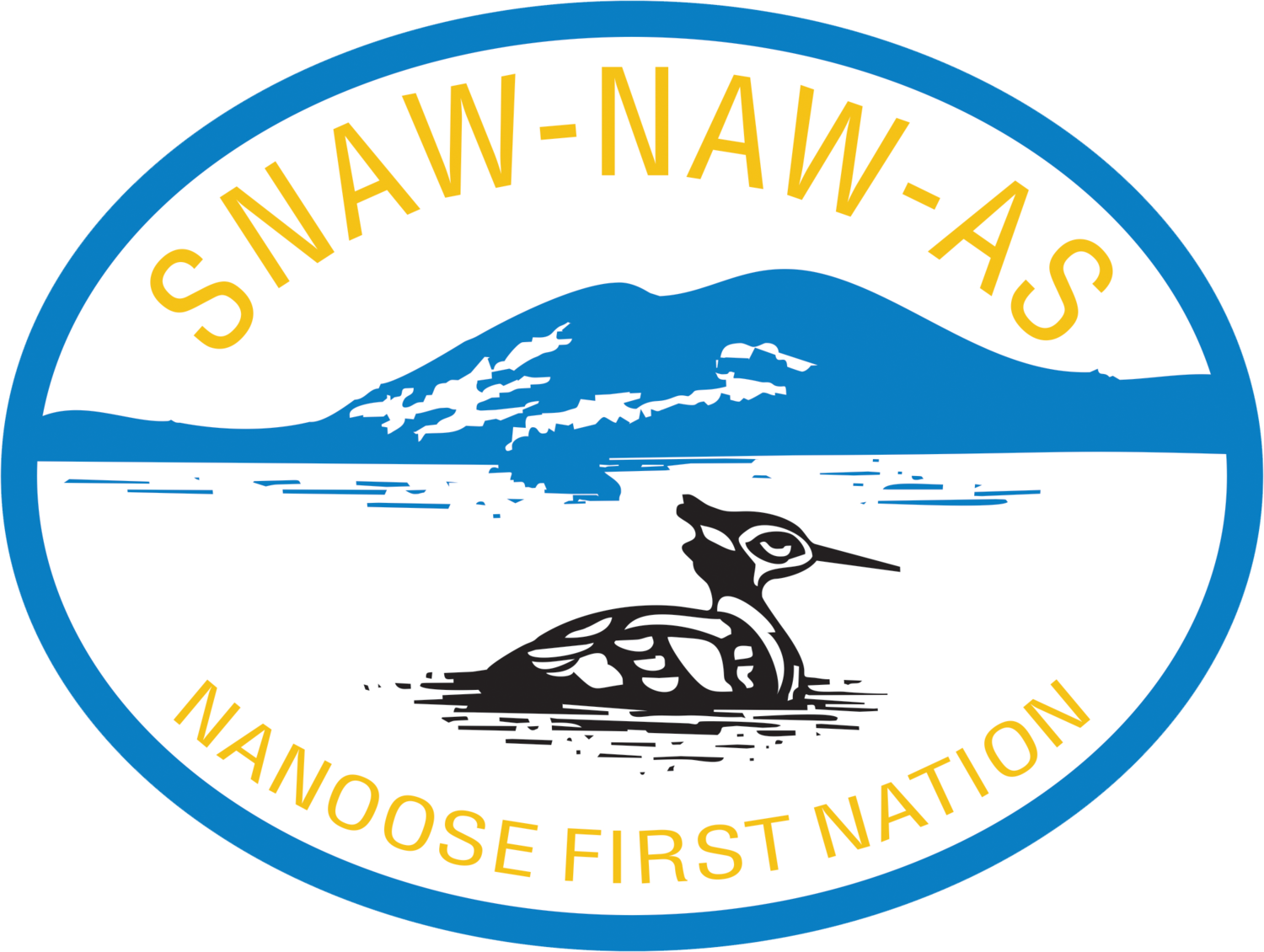
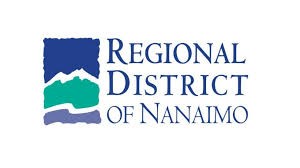

![]()

